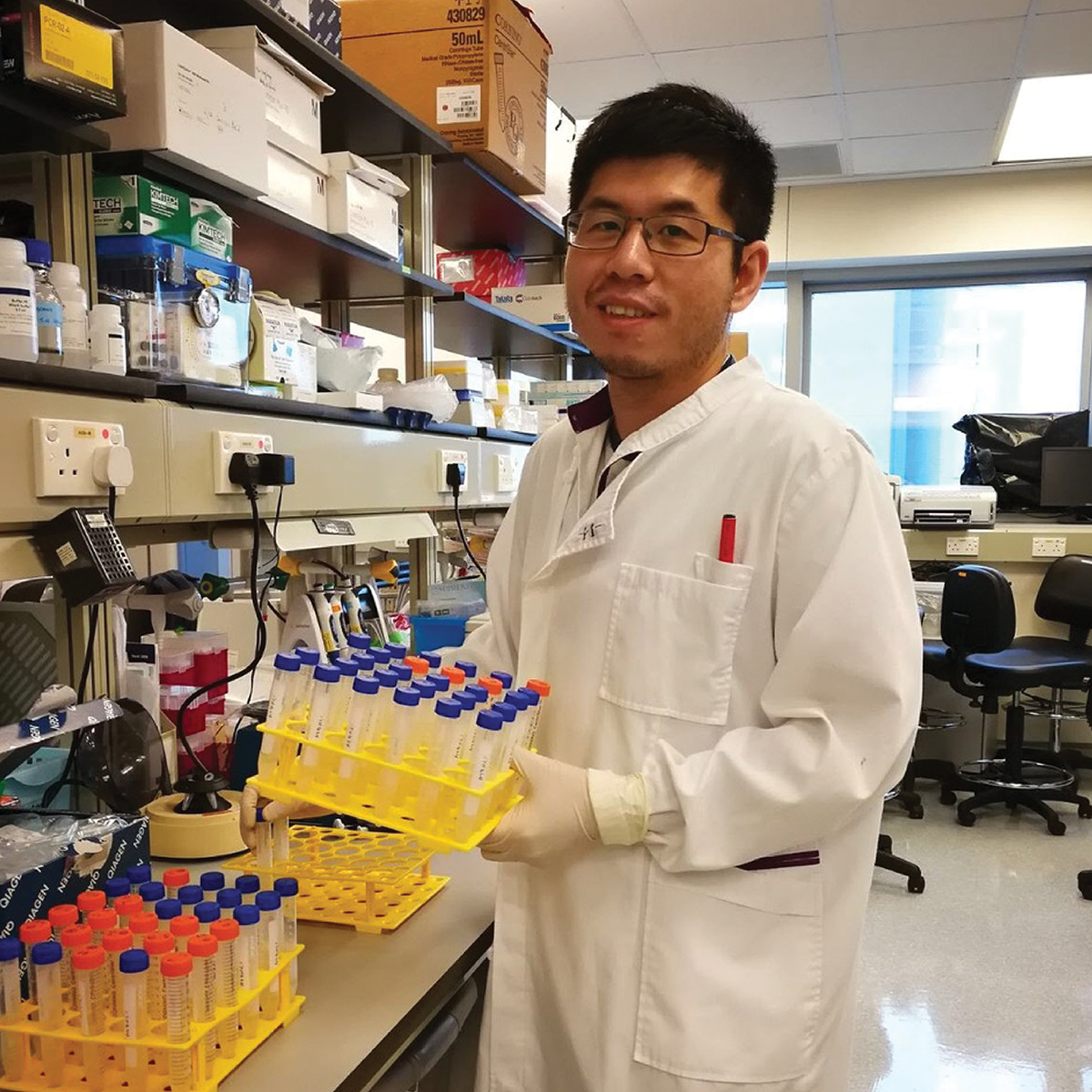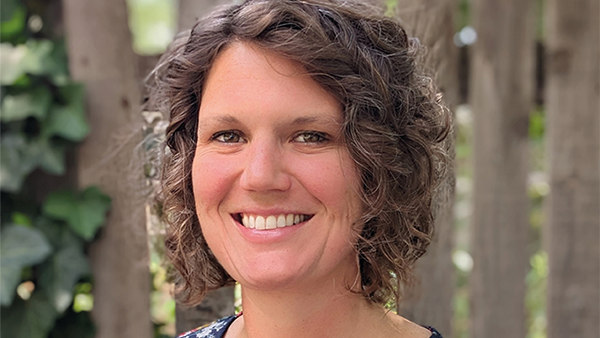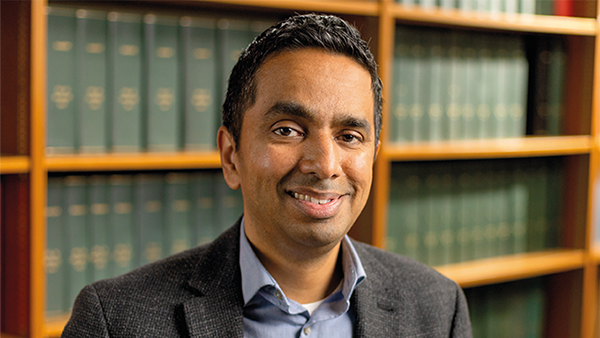Intentional Infection
A study that infected patients with COVID-19 spurred some controversy, but what did it reveal?
It was in October 2020 – in the throes of the COVID-19 pandemic – that a “first-of-its-kind” UK challenge trial was announced to some fanfare, as well as some furrowed brows (1). Seeking to understand the contagiousness of a suddenly infamous virus, the SARS-CoV-2 human challenge study planned to infect participants with a small dose of the virus. Today, nearly three years later, analyzed data from that trial have been published, offering “fascinating insights into contagiousness and transmission,” including the role of so-called “supershedders” (2).
Anika Singanayagam and Jie Zhou – both from Imperial College London and joint first authors on the study – explained more about how the research came to pass and what it can teach us about COVID-19.
First, how did the research come to pass?
Singanayagam: We have had a longstanding interest in respiratory virus transmission. Through work on flu prior to the COVID-19 pandemic, we have been very aware that there are many unknowns about transmission and that transmission is difficult to study. We had already done a lot of prior work on techniques for sampling airborne viruses, mostly influenza, and so understood some of the challenges. At the onset of the pandemic, I was working at the UK Health Security Agency (then Public Health England) – and it was clear it was important to rapidly understand more about contagiousness and transmission because of the public health implications. Such understanding can help inform us on how we best implement non-pharmaceutical interventions, testing, and isolation. The idea of setting up a human challenge study for SARS-CoV-2 during the pandemic was discussed extensively via a consortium of experts in the UK, which included support from the government’s Vaccines Task Force. Because of the unique and carefully controlled nature of this study, adding in a study component that involved measuring viral emissions was an ideal opportunity to learn more about contagiousness and transmission. In a human challenge trial, we can study this in great detail and, because we know each participant is exposed to the exact same virus, dose and route, we can unpick individual level differences in a way that cannot normally be done, and this can feed in to inform public health practices.
Zhou: Like Anika, I have been studying the transmission of respiratory viruses for many years. My PhD project was to define the smallest aerosol particles that can facilitate the transmission of influenza virus. This information can help design public health measures, such as physical distancing, use of masks, and ventilation. Since the COVID-19 pandemic, our team has conducted air and environmental sampling in many different settings, such as households, public transport, university campuses, student accommodation, and general hospitals. However, none of these studies were in real-world settings like the SARS-CoV-2 human challenge study, which allowed us to study its transmission in great detail.
In your own words, what did the study set out to do?
Singanayagam: The SARS-CoV-2 human challenge study was the first in the world of its kind – healthy, young volunteers were deliberately given a very small dose of SARS-CoV-2 to induce mild infection and then monitored very closely in an inpatient hospital setting. In this type of study, we can perform intensive sampling right from the point that they are infected. This approach delivers information on those crucial, early time points after infection that are difficult to sample in other types of studies. We collected SARS-CoV-2 virus from the air, breath, and environmental surfaces from the study volunteers. The aim was to gain a really detailed understanding about people’s contagiousness – when it occurs, from where, and who is more infectious. We wanted to learn how contagiousness relates to symptoms, to viral load in the upper respiratory tract, and to testing with lateral flow antigen tests.
Zhou: The transmission of respiratory viruses, including SARS-CoV-2, is a complex process. There are multiple non-mutually exclusive modes of transmission, via direct contact, fomites, large aerosol particles (>100μm), and small aerosol particles (<100μm). To fully understand the transmission modes, we used different sampling strategies, such as sampling masks and ambient air sampling machines, to understand the airborne transmission in short and long (>1 meter) distances, respectively. We also swabbed large environmental surfaces to understand how much virus was deposited on them. Small and frequently touched surfaces, such as television remotes and door handles, and participants’ hands were sampled to understand the contribution of direct contact and fomite transmission.
What sort of challenges were involved in deliberately infecting participants with COVID-19?
Singanayagam: There were many challenges. In all stages – planning the study, setting it up, recruiting and screening volunteers – we had to ensure it was carried out in the safest way possible. Fortunately, there was a large group of experts working on the study, with a range of expertise, as well as extensive consultation with a wider group of independent people, such as ethicists and members of the public. Every step of the study had to be carefully considered, including how it would be conducted, how to minimize any risk to people involved – there was a great deal of planning that went into it. Of utmost importance was the safety of participants and ensuring they were well informed about any potential risks and uncertainties. Another challenge was that, due to the emergence of variants, introduction of vaccines, and the increasing scientific knowledge about the disease, the landscape for COVID-19 was rapidly changing.
Zhou: We were very lucky as well. I was directly involved in daily sampling and I can say that all participants were super friendly and cooperative. They participated in the study because they wanted to contribute to the medical effort and see research as a positive way forward through a pandemic.
Did you achieve your goal?
Singanayagam: I think we exceeded our expectations! This type of research has never been done before in a human challenge setting. We were able to collect really interesting, high quality data, quantifying viral emissions from infected people, longitudinally and to a degree of detail that has not been done before. The work resulted in some fascinating insights into contagiousness and transmission.
Zhou: We were able to combine the data from studies in real-world settings and in the human challenge setting, which definitely extends our current knowledge on the transmission of SARS-CoV-2. This work has given us insights that can be implemented for the development of control measures.
What were the study’s findings?
Singanayagam: We looked in detail at the 18 challenged volunteers who became infected. We found substantial amounts of virus in their emissions into the air and on the surfaces in their rooms. We saw a surprising amount of heterogeneity from person to person. So, despite them being inoculated in the same manner with the exact same virus and dose, the amount of virus they shed into the upper respiratory tract and then emitted was quite strikingly varied. We identified that there were a small number of participants who emitted a large amount of virus into the air. We found that the amount of virus emitted was not influenced by how symptomatic a person was – which is a common assumption about contagiousness that needs further research to understand. We also saw that viral emissions correlated more strongly with the viral load in the nose (more than the throat), which was interesting, as it suggests that more emitted virus was coming out through the nose. We found lots of the virus, including infectious virus, on surfaces, including those likely contaminated by hands and those more likely contaminated from depositing droplets. We saw that lateral flow antigen tests were very effective at picking up when people were contagious and actively emitting the virus into the air and environment.
Was there a particular result that surprised the team?
Singanayagam: We were surprised to see that most viral emissions occurred after the participants reported some symptoms. The idea of pre-symptomatic transmission of SARS-CoV-2 has been well described through epidemiological studies. Indeed, in line with this, we did see that around a third of emissions occurred before our participants developed the characteristic symptoms of COVID-19. We also found that using fever as a way of identifying infectious people was not very helpful! However, because the participants in this study were carefully noting even their mild symptoms, we could pinpoint with great accuracy how viral load and emissions correlated with the onset of early symptoms. Our data suggests that if you are aware of those mild early symptoms of a potential infection and take lateral flow antigen tests to confirm, you could capture a large amount of contagiousness.
Zhou: We were able to culture viable instances of SARS-Cov-2 from several environmental surfaces, such as television remotes, door handles, and tables. Previously, very few studies in real-world settings have found live viruses from surfaces, although SARS-CoV-2 has proved to be very stable in experimental settings. Although we cannot directly define onward direct or indirect contact transmission, our findings support the idea that measures such as hand washing and surface cleaning in close indoor settings are very important to reduce transmission risk.
Where could this research lead to in terms of public health planning?
Singanayagam: Because this is a study with a small sample size and highly selected participant group, it is important to interpret the findings in that context. The strengths of the study are that we can look in great detail and sample longitudinally, which gives us power to investigate and understand aspects of infection in a small cohort. The study has given us some really valuable insights into infection, which help us focus public health research to corroborate these findings – which can then guide policy. For example, our data indicate viral emissions could be coming from the nose, suggesting we should reinforce public messaging on covering the nose with face coverings. As mentioned above, the data from our study indicates we should not ignore those mild symptoms, but we should take rapid tests to confirm infection. If other research and cost effectiveness studies corroborate, it may be considered that deployment of lateral flow tests for use in paucisymptomatic illness would be a valuable alternative to asymptomatic screening. Our work also reminds us that viruses can be detected on the hands and surfaces around an infected person. Until we have further data to understand what this means for transmission, we should continue with measures like hand hygiene and surface cleaning, in addition to vital measures to combat airborne transmission.
This article originally appeared on our sister brand, The Pathologist.
References
E Callaway, “Dozens to be deliberately infected with coronavirus in UK ‘human challenge’ trials,” Nature (2020). Available at: bit.ly/44UqgAK.
S Sidik, “‘Bold’ study that gave people COVID reveals ‘supershedder’ phenomenon,” Nature (2023). Available at: bit.ly/3q5e7tS.







